Information in this article was presented as part of a Public Relations Society of America – Healthcare Academy Section webinar led by ddm and University of Michigan Health-West (formerly Metro Health – University of Michigan Health).
Public relations is an important tactic in helping to increase brand awareness and build a positive reputation. Maybe you’re wondering, “Why is a marketing agency talking about public relations?” and here’s why: it’s a key part of the paid, owned, earned ecosystem we talk so much about.
For healthcare organizations especially, public relations not only supports the organization as a whole, it supports its physicians too. When community members see healthcare experts taking an active interest in their health and the health of the community, it builds credibility and trust.
Importance + value of media relationships in healthcare
From the moment we hire a physician, we let them know that having a good reputation and embracing media opportunities is imperative to building their practice
Jamie Allen, University of Michigan Health-West Head of Public Relations and Internal Communications
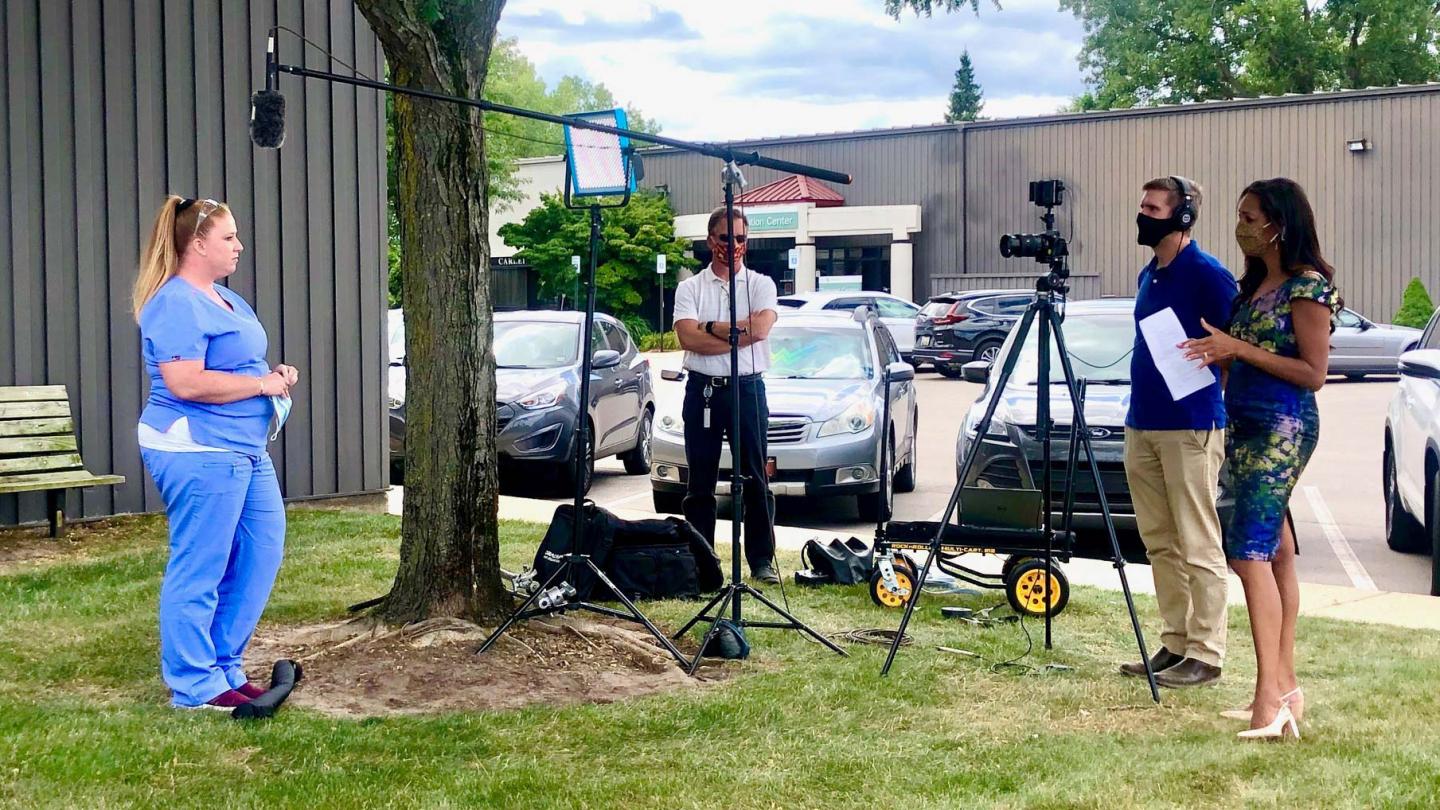
Media coverage featuring a physician or specialty can create what Jamie calls a “halo effect.” The goodwill produced by coverage benefits other providers within a specialty and across the organization.
“For example, if one of our pulmonologists does an interview about a new state-of-the-art procedure, that entire service line benefits when patient volume increases as a result of the information provided,” she shares.
Even paid media opportunities are beneficial from an earned perspective. A sponsorship with a television station or print publication can lead to increased earned coverage down the road. Jamie finds that because of her organization’s paid sponsorships at the local NBC affiliate, the station comes to them over competitors on a regular basis to provide content for stories.
Build sustainable media relationships
Just like journalists have their own sources, as a PR or communications professional, it’s vital that you cultivate a list of journalists as your sources.
Research healthcare beat reporters
“When I started in my role at University of Michigan Health-West, I made a point of researching healthcare reporters in the community. I sent emails introducing myself and began to build relationships,” she says.
Your local PRSA chapter is also a great place to go. Local reporters are often brought in as speakers for events and may also be members. By attending these events, you can network with reporters, collect contract information, and put names and faces together.
Think beyond the obvious media outlets, too. Explore niche publications or diverse media outlets. You might be surprised by the reach you’ll get through grassroots publications or those written for minority populations. Once you build your database of names and contact information, make sure you update it at least once a year. There is quite a bit of turnover in media and reporters may get shuffled around or leave.
Pro Tip #1
Television reporters are typically signed to 2- or 3-year contracts, and then they may move on. Just because that reporter is your contact now, doesn’t mean they will be once his/her contract is up.
But don’t delete a reporter’s work phone number when he/she leaves! Many times, that reporter’s number will be given to a new hire. So, while the reporter will be different, the phone number might still be good.
Pro Tip #2
It’s also important to know when editorial meetings happen. The best time to send your press release, make a pitch, or contact a reporter is before an editorial meeting.
In TV, those usually happen around 8:30am/9:00am and again around 3:00pm. Reporters and assignment desk managers love going into editorial meetings with a solid story or lead.
Nail your media pitch
How often you pitch the media may vary, but establishing consistency is important. Jamie and her team have found their sweet spot is pitching about three times a month.
Make it newsworthy + timely
First and foremost, strive to pitch stories that are newsworthy and/or timely. That story Jamie mentioned about new state-of-the-art procedures will only be interesting to the media if it is in fact new. If the equipment has been around for six months, the story’s newsworthiness decreases.
Healthcare-related holidays are timely opportunities to feature service lines. Pitching a story about heart health might be tough in June, but during Heart Month in February, it’s perfect.
Provide assets ahead of time
You can increase your chances of receiving coverage by providing photos, video, or quotes as part of your pitch. When you provide assets up front, it makes the journalist’s job much easier.
Jamie shares, “We were the first in our market to debut a new laser for the treatment of kidney stone surgery. By sending video (b-roll) of the laser along with the press release, the story ran on all three TV stations in our market. I didn’t have to make follow-up calls, and the stations didn’t need to ask to come shoot video.”
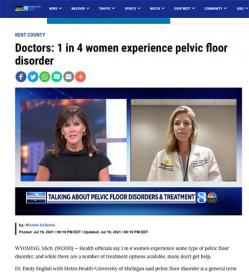
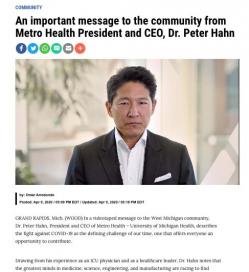
Identify your organization’s on-camera talent
When the media comes calling, who in your organization do you go to? If you’re lucky, you have go-to physicians or healthcare experts on your list. But what if you don’t?
It starts with onboarding
At University of Michigan Health-West, the organization has a physician onboarding process that includes clear expectations about media opportunities.
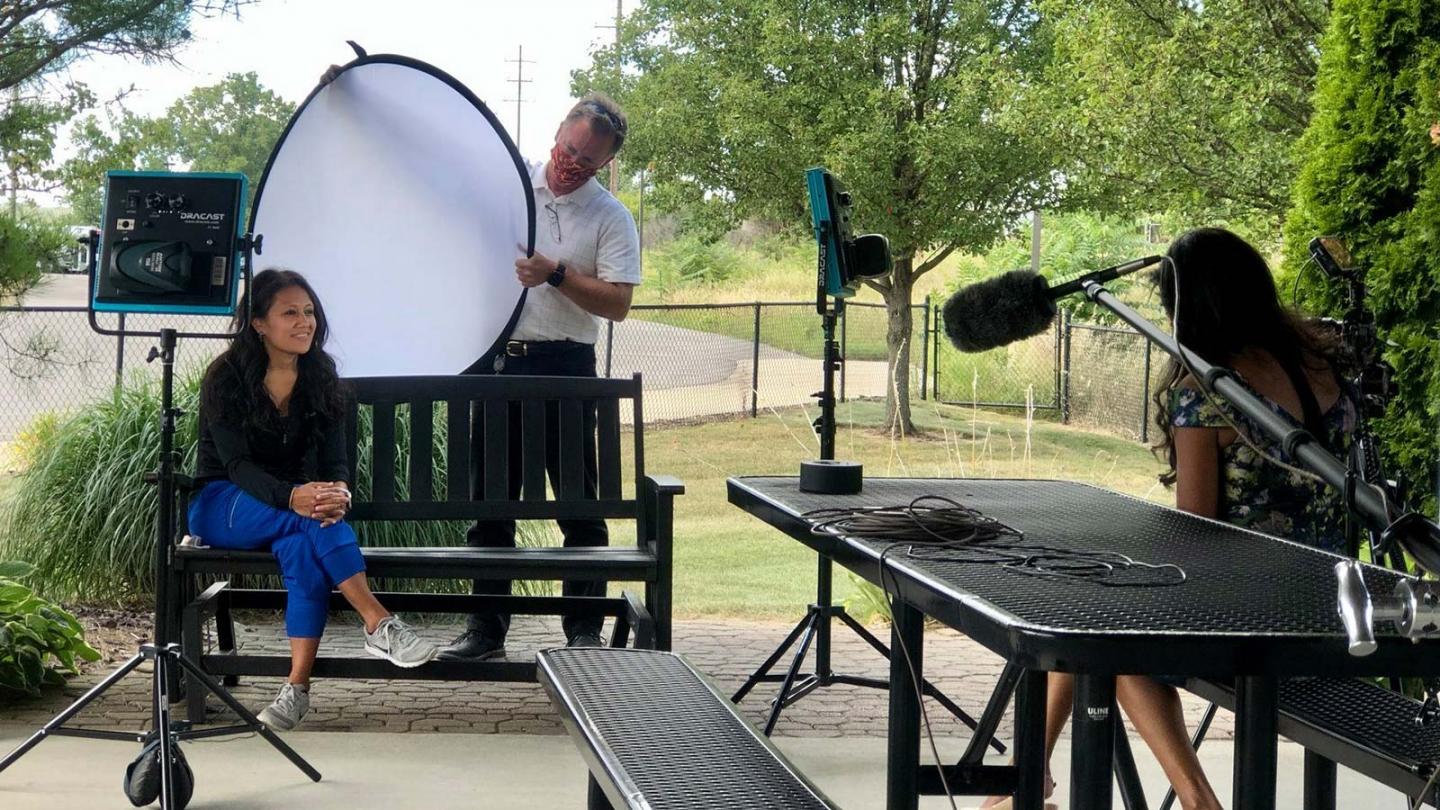
“We’re very clear that to build a thriving practice, a physician may have to participate in media interviews,” Jamie states. “We talk to them about the importance of public relations for them and the organization as a whole.”
Physicians are also asked to fill out an onboarding questionnaire to gather insights such as whether they speak a second language, whether they’ve done live interviews before, or whether they prefer helping with written articles instead.
Ask physicians about their passions
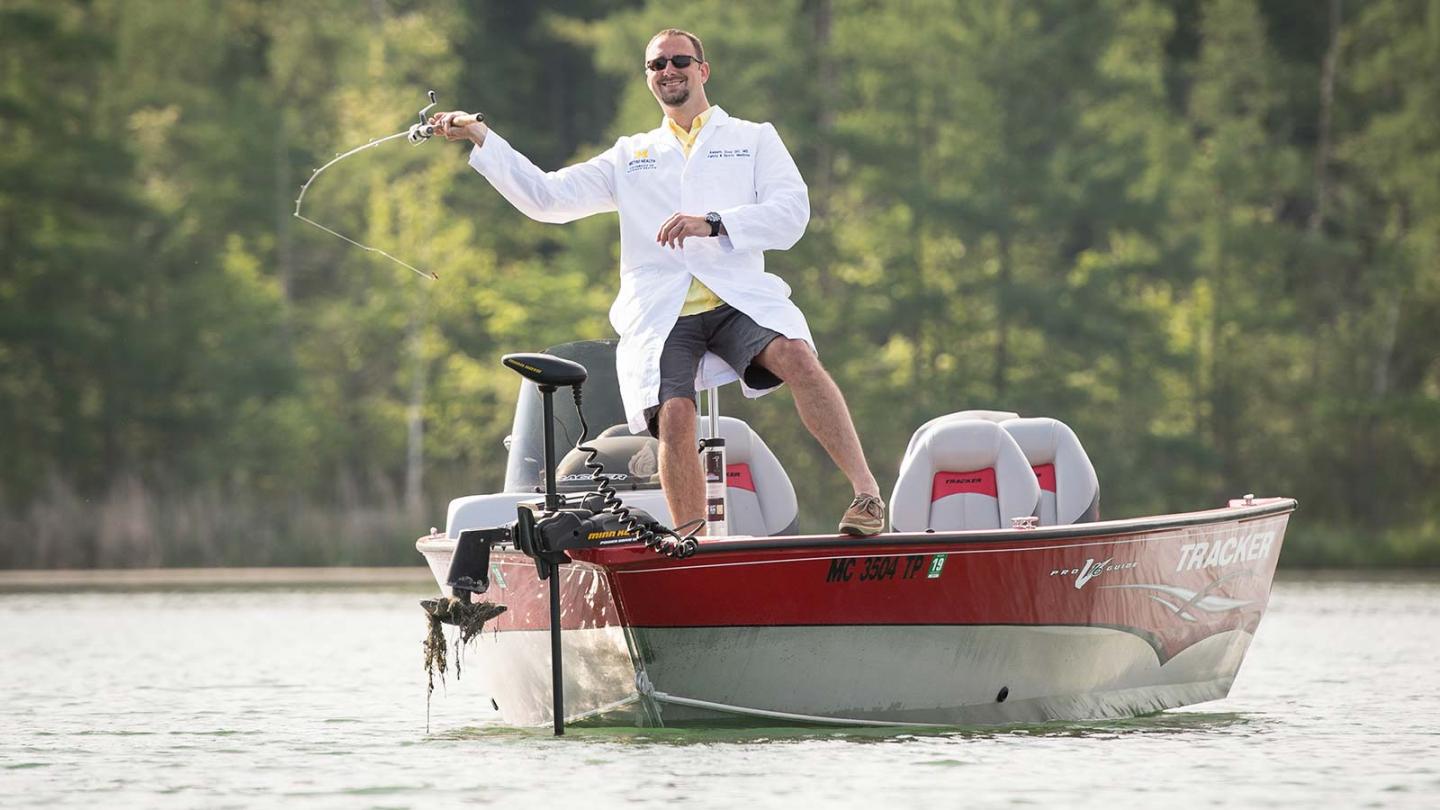
Whether it’s part of a questionnaire or in-person conversation, ask physicians about their passions. A physician who is a triathlete, for example, is perfect for interviews about avoiding sports injuries.
As an example, ddm helped University of Michigan Health-West feature primary care physician and avid angler Dr. Dood in Angler Magazine.
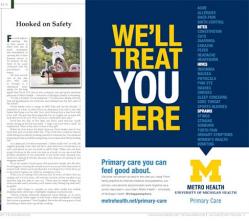
Pro Tip #3
Ask providers about their preferred method of communication. Find out whether they’ll respond quicker to email, phone call, or text message. This will ensure when you need them in a pinch, you know the best way to reach them.
Pro Tip #4
Make friends with service line office managers. They are often your best resource in reaching a physician. They know what schedules look like and they have easier access to physicians. They also know which physicians are new and could use media coverage to boost patient volume.
Make media opportunities a breeze
Just because a physician is a renowned expert in his/her field, doesn’t mean they’re itching to do a media interview. Even the most experienced physicians may need some coaching and convincing.
Prepare physicians ahead of time
The easier you make it, the more likely a physician is to participate. That means prepping them ahead of time.
Jamie shares a story of how preparation won the day for one of her physicians. “I worked with a physician who was extremely nervous and hesitant to do an interview about a new procedure. After a lot of coaching, scripting, and practicing, the physician did a live morning show interview.”
As a result of that interview, the physician’s office received several calls from potential patients who watched and wanted to make an appointment. Not only did the preparation make the physician more willing to participate, seeing the reaction afterward was icing on the cake.
Here are some other ways you can encourage and prepare interviewees:
- Create talking points
- Provide physicians with interview questions and allow time for review
- Remind them what to wear (and what NOT to wear)
- Encourage good posture and eye contact with interviewer
- Give them interview options: live, recorded, phone call, Zoom call, etc.
Pro Tip #5
Whether your physician is doing a Zoom interview or an in-person interview at your facility, prepare the room ahead of time.
When the pandemic hit, Zoom interviews became the default for healthcare organizations like University of Michigan Health-West. Initially, Jamie allowed physicians and hospital leadership to choose their desired interview location. However, she soon realized the space mattered.
“We created two spaces to conduct all our COVID-19 Zoom interviews,” Jamie explains. “One was a conference room, and one was an exam room. We used banners and tasteful shelving to create backgrounds that were less distracting and more on-brand. When physicians know you’re making them look their best, they’re more inclined to participate.”
Convince physicians to be interviewed again
Alright, so you’ve done the hard work. You secured a great media opportunity and found a physician to participate. Now, you need to convince his/her to continue participating again, and again, and again…
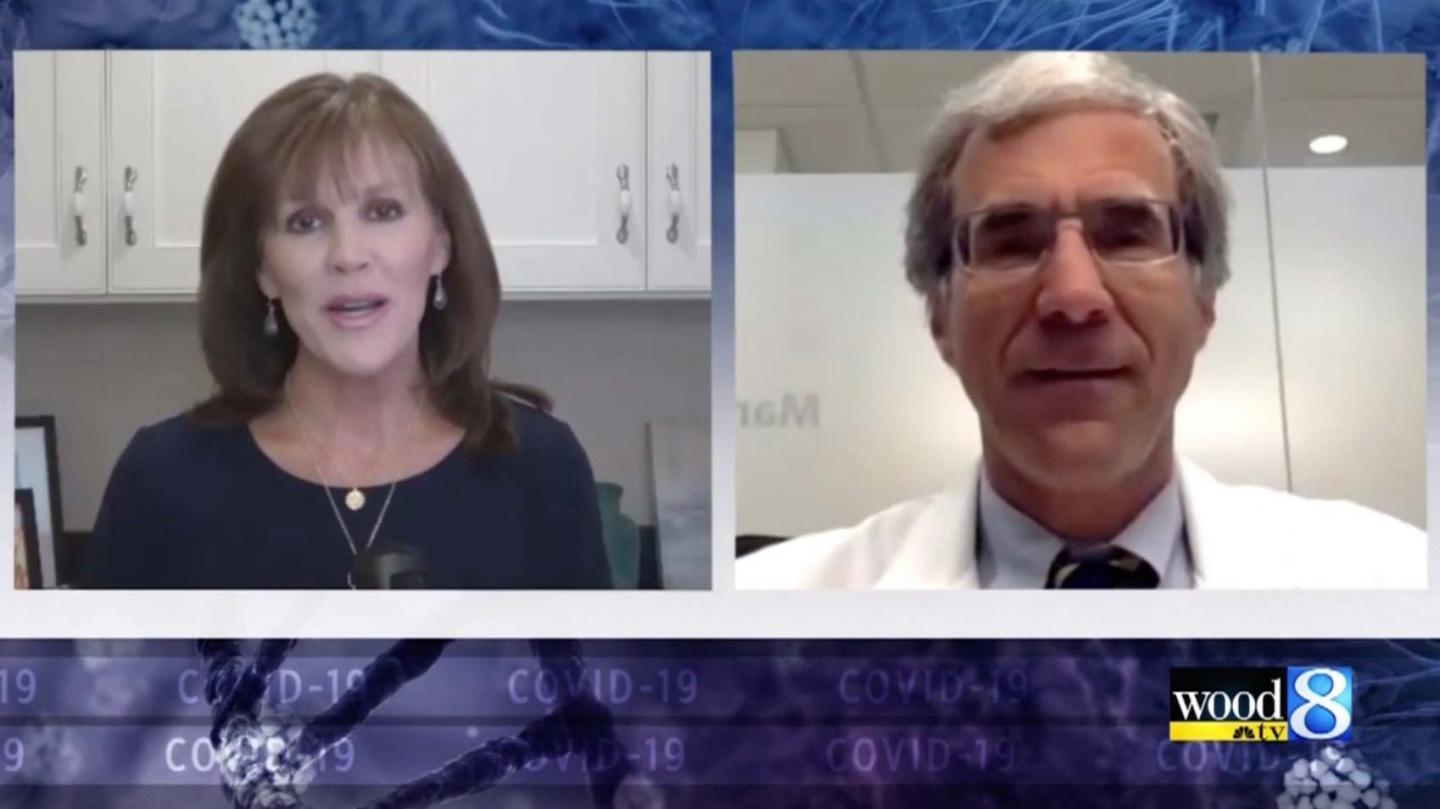
Send interviewees a “Thank You”
Everyone loves a good “thank you” note—even physicians. Whether it’s a handwritten, mailed card or an email, be sure to tell those who participated that you appreciate it.
Include feedback on what they did well and tips for how they can really rock their next interview. If there’s a link to watch or read the story, include it in your message.
Share successes
If an interview was stellar, be sure to share it with others within your organization. If it was a print piece that looked great, print it out and frame it. Maybe find a place to display the coverage in the service line office or on a feature wall in your facility.
Share the story with your leadership team and C-suite executives to make them aware of the great PR work that’s happening—and remember to let interviewees know you did this. It might motivate them to step up their game or participate more often.
Share, promote + repurpose coverage
Get ready! This is the stuff marketing teams can really sink their teeth into. Content is there for the taking, and now it’s time to share it.
“We find that sharing the media coverage we receive is a critical part of continuing the exposure,” says Jamie. “We share our news coverage on our website, social media, and even on our lobby TVs at the hospital.”
This Dr. Elias interview is a perfect example of sharing media coverage outside its native format. “This was a pre-recorded radio interview. We were able to announce it on social media and encourage people to tune in and listen. Then, after the segment aired, we shared a link to listen to it,” Jamie explains.
You can also repurpose your media coverage into content for a different channel. You can turn sponsored content into a blog article on your website. You can use the transcript from a TV interview to write an article and publish it in another outlet.
If a physician has a great quote from an interview, make a social media post out of it or put it in service line marketing collateral. You put time and effort into earning media coverage, so make the most of that investment.
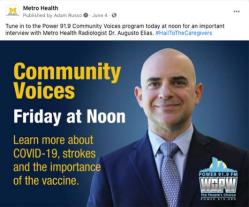
A focus on public relations pays off
Even though we’re a bunch of marketers over here, we know the value of a solid public relations strategy. It’s a way to spread your organization’s message even further and reach key audiences. Our marketing plans with University of Michigan Health-West are supported by the efforts of Jamie and her team, and vice versa.
What’s important is making sure everyone’s communication plans are aligned so that audiences receive consistent messaging at the right time, the right place, and in the way that resonates with them.
